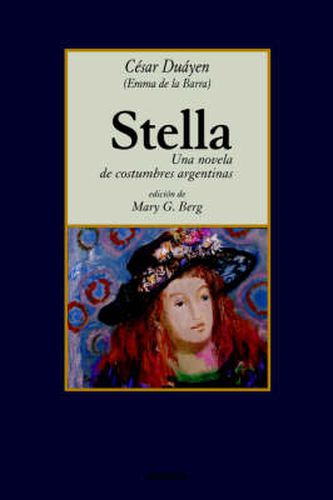Readings Newsletter
Become a Readings Member to make your shopping experience even easier.
Sign in or sign up for free!
You’re not far away from qualifying for FREE standard shipping within Australia
You’ve qualified for FREE standard shipping within Australia
The cart is loading…






This title is printed to order. This book may have been self-published. If so, we cannot guarantee the quality of the content. In the main most books will have gone through the editing process however some may not. We therefore suggest that you be aware of this before ordering this book. If in doubt check either the author or publisher’s details as we are unable to accept any returns unless they are faulty. Please contact us if you have any questions.
The 20th century’s first Argentine best seller was Cesar Duayen’s novel Stella of 1905. Cesar Duayen was quickly revealed to be Emma de la Barra (1861-1947), who besides founding the first professional school for women in Argentina, the national Red Cross, and a model factory workers’ community, published five extraordinarily sucessful novels about Argentine society in the early part of the century. It was a time of economic anxiety and eagerness to redefine the responsibilities of citizens, both men and women, in this new era of rapid technological change and shifting global relationships. Traditional identities are outdated, and the existing social elite (embodied in Stella by the Maura Sagasta/Quiroz family) must modernize or slip into moral and financial bankruptcy. The central character of the novel is a young woman who engages in an uphill battle to educate and transform not only her own upper class family, but everyone. It is a love story that never quite happens, a portrayal of an Argentina that does not quite manage to enter the modern age, either in upper class urban society or out on the family ranches where obsolete methods go unchallenged. The heroine’s efforts to instill European efficiency, egalitarian morality and a determined work ethic are part of a lively and appealing story. It explores the possible roles for modern women in an Argentina that now offers improved women’s education and professional possibilities, as well as dramatizing the dilemmas of a 19th century nation confronting rapid changes. This centennial edition of Stella has been updated with plentiful footnotes and a critical introduction by Mary G. Berg, author of many studies of Latin American women writers and their times. This novel would fit well into courses on Latin American narrative, women writers, Southern Cone history, gender and cultural studies, and nation-building.
$9.00 standard shipping within Australia
FREE standard shipping within Australia for orders over $100.00
Express & International shipping calculated at checkout
This title is printed to order. This book may have been self-published. If so, we cannot guarantee the quality of the content. In the main most books will have gone through the editing process however some may not. We therefore suggest that you be aware of this before ordering this book. If in doubt check either the author or publisher’s details as we are unable to accept any returns unless they are faulty. Please contact us if you have any questions.
The 20th century’s first Argentine best seller was Cesar Duayen’s novel Stella of 1905. Cesar Duayen was quickly revealed to be Emma de la Barra (1861-1947), who besides founding the first professional school for women in Argentina, the national Red Cross, and a model factory workers’ community, published five extraordinarily sucessful novels about Argentine society in the early part of the century. It was a time of economic anxiety and eagerness to redefine the responsibilities of citizens, both men and women, in this new era of rapid technological change and shifting global relationships. Traditional identities are outdated, and the existing social elite (embodied in Stella by the Maura Sagasta/Quiroz family) must modernize or slip into moral and financial bankruptcy. The central character of the novel is a young woman who engages in an uphill battle to educate and transform not only her own upper class family, but everyone. It is a love story that never quite happens, a portrayal of an Argentina that does not quite manage to enter the modern age, either in upper class urban society or out on the family ranches where obsolete methods go unchallenged. The heroine’s efforts to instill European efficiency, egalitarian morality and a determined work ethic are part of a lively and appealing story. It explores the possible roles for modern women in an Argentina that now offers improved women’s education and professional possibilities, as well as dramatizing the dilemmas of a 19th century nation confronting rapid changes. This centennial edition of Stella has been updated with plentiful footnotes and a critical introduction by Mary G. Berg, author of many studies of Latin American women writers and their times. This novel would fit well into courses on Latin American narrative, women writers, Southern Cone history, gender and cultural studies, and nation-building.